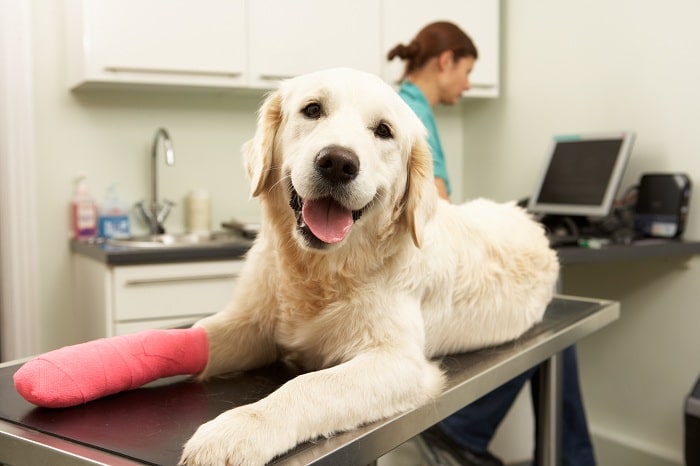You return home to find your dog vomiting and drowsy. After rushing them to the vet, you discover that they have swallowed one of your socks and require emergency surgery, which will cost you several thousand dollars. Are you capable of paying that bill? If not, pet insurance might be worth considering. Pet insurance helps to cover the expense of your pet friend’s medical care. It may pay for expenses such as cancer treatment, emergency care, prescription medications, and surgery.
Pet insurance may save the life of an animal that would otherwise be euthanized if its owner was unable to pay for treatment in some dire situations. However, if your pet is rarely ill, you may find up paying thousands in premiums without receiving anything in return.
So is pet insurance worth it? Here is some information to assist you in making your decision.
Pet Insurance is Growing
A rising number of pet owners are opting to insure their pets. According to the North American Pet Health Insurance Association, or NAPHIA, about 4 million dogs and cats in the United States were insured by pet insurance in 2021, a 28% increase from the previous year. the number of insured cats and dogs in the United States has more than doubled since 2017.
Although this is a substantial development, the industry still only serves a small percentage of American pets. The American Pet Products Association, or APPA, estimates that there are 69 million dog and 45 million cat households in the United States.
What Pet Insurance Costs?
According to NAPHIA statistics from 2021, the most recent available, the average yearly cost for an accident and illness policy is around $584 for dogs and $343 for cats. This equates to roughly $49 per month for dogs and $29 per month for cats.
If you choose an accident-only policy, the annual cost for dogs is $239 and $130 for cats. Such plans will pay for care if your pet is hit by a car or ingest something dangerous, but not if they become ill.
Your pet’s age and breed, the cost of veterinary care in your area, and the insurance policy you select can all have a major impact on premiums. Be aware that rates tend to rise as your pet ages and develop health issues. If the plan becomes too pricey for your budget, you may find yourself terminating coverage just as your pet needs it the most.
What Does Pet Insurance Cover?
You’ll want to know what pet insurance covers now that you’ve taken a crash course on the cost of caring for a pet. The amount the insurance company will pay for medical bills is specified in each insurance policy.
Accident and illness insurance often includes:
- Bone fractures
- Ingestion of toxic substances
- Gingivitis and other dental ailments
- Chronic conditions like diabetes
- Breed-specific diseases such as hip dysplasia
- Emergency care
- Surgical procedure
- Disnitic testing
- Hospitalization and surgical procedures
- Prescription medications
An accident-only pet insurance plan will cover veterinarian bills incurred as a result of an accident, such as a torn ligament or a pet ingesting something poisonous. However, an accident-only policy will not cover veterinarian costs associated with an illness, such as ear infections or cancer.
The option to add wellness or routine care coverage is available on several pet insurance plans. This package covers routine check-ups, microchipping, vaccinations, and flea/tick prevention.
What Does Pet Insurance Not Cover?
Here are some examples of frequent exclusions for pet insurance:
- An experimental procedure. This includes treatments that are considered experimental, investigational, or not within the approved standard of care by your state’s veterinary medical board.
- Food, dietary, and nutritional supplements. Although some policies cover prescription food and supplements, pet insurance typically does not cover dietary expenses for your pet.
- Personal grooming. Pet insurance does not often cover services such as baths, dips, nail trims, and shampoos.
- Non-veterinary costs. This includes license or certification fees, government rule or regulation compliance (such as a dog license), record access or copying fees, and waste disposal services.
- Pre-existing medical conditions. This includes illnesses and injuries your pet experienced before the start of your coverage. Some plans do not exclude pre-existing conditions indefinitely.
Is Pet Insurance Worth It?
Before buying pet insurance, there are a few things to think about. If pet insurance is worth it, owners should consider the following:
Pros
#1. Reasonable and affordable.
Pet insurance costs vary by provider, as do the factors influencing the cost. However, you could expect to pay between $15 and $40 per month for a cat and $30 to $70 per month for a dog. Your monthly fee is affected by your pet’s breed, gender, age, and weight. And, if it appears to be a bit expensive, keep in mind that it includes the price of care, treatment, and probable operations. Having pet insurance may be less expensive than those normal rates.
#2. You are not required to change veterinarians.
Pet insurance covers all providers, unlike standard human health insurance, which only covers “in-network” providers. As a result, after you’ve signed up, you won’t have to look for a new veterinarian. You can stay with the person who has always taken care of your pet.
#3. It includes options.
Assume you simply require basic pet insurance to cover routine checkups and possibly some annual vaccines. Then you can enroll in a plan of insurance that does just that. If you want a more comprehensive plan that covers the above as well as extra items such as surgical procedures and prescriptions, you can find one. An accident-only coverage is an option if you want affordable pet insurance. The bottom conclusion is that you may devise a strategy that works for both your pet and your budget.
#4. Mind at ease.
Pet insurance, like other types of insurance, gives pet owners peace of mind by covering various bills. It can be tough for someone to decide whether to pay to help their animal or to pay for other expenses. By providing additional resources for a set cost, pet insurance takes the owner out of the equation.
Cons
#1. You will still be required to pay something.
Pet insurance can help save money. However, depending on the issue your pet is having, the recommended treatment, and any potential surgical procedure, you may still have to pay out of pocket.
#2. It doesn’t work like your health insurance.
A provider submits a claim on your behalf with standard health insurance, leaving you with little to pay in the office (although bills may come later). Meanwhile, you must pay the bill up front for pet insurance. You are then responsible for filing the claim with the provider, who will refund you later.
#3. Pre-existing conditions may be excluded.
Another way in which pet insurance differs from human health insurance is in this regard. If your pet’s pre-existing conditions are known, insurance coverage may be rejected, leaving you with an out-of-pocket expense. As a result, don’t sign up with a provider later in the pet’s life, expecting that their existing medical issues will be covered. Act today to secure a low-cost package before your pet develops any health issues.
#4. You may not use all of the benefits.
If it helps you save money, a monthly pet insurance bill will be worth it. However, if your dog is healthy and doesn’t need regular visits, you can end up spending on something you don’t need. Because pet health is unpredictable, you won’t be able to conduct an accurate cost-benefit analysis until you sign up with a provider.
As previously stated, pet insurance has numerous benefits and, if you can afford it, it may be worth it to get it as a form of protection for your animals.
Pet Insurance Deductibles, Reimbursement, and Coverage Caps
When you select a pet insurance policy, you will select a deductible amount, which is the amount you must pay before the pet insurance coverage will start paying. Between $50 to $1,000 is the typical insurance deductible. There are two types of pet insurance deductibles in general:
- Annual deductible: You will be responsible for paying the deductible at the beginning of each policy term. If you meet your deductible throughout the policy term, you won’t have to pay it again until the following year.
- Per-condition deductible: You will pay a deductible for each illness or incident. For example, if your pet suffers from persistent allergies, you would pay a deductible for medical expenses incurred as a result of the treatment. You won’t have to pay your deductible again for vet expenses linked to that condition once you’ve reached it. However, if your pet develops a new condition or has an incident, you will be required to pay another deductible.
You will choose a reimbursement level, which is the percentage of vet bills that your insurer will cover (after the deductible). Average reimbursement percentages are 70%, 80%, or 90%. Nevertheless, some insurance companies, like Figo, will reimburse you for 100% of your vet bills.
You may also be able to select an annual coverage limit, such as $5,000, from your pet insurance provider. Pets Best, TrustedPals, and Spot all provide limitless coverage.
So, Is It Worth It to Get Pet Insurance?
Insurance companies do not pay out more in claims than they receive in premiums. That doesn’t imply the chances are always stacked against you. If you be hit with a hefty, unexpected vet cost, the premiums you pay may be significantly less than the refund you receive. And that is the primary purpose of insurance: to provide financial protection against major disasters.
Here’s an example:
- Premiums: Assume you’ve been paying $684 per year for pet insurance for your dog over the past three years. Pet insurance premiums to date have cost $2,052.
- A large vet expense: Your dog then ingests one of your toddler’s toys, resulting in a $4,000 vet bill. If your deductible is $500 and your reimbursement level is 90%, your out-of-pocket expense for the incident is $850 ($500 deductible + 10% of $3,500 = $850).
- The result: The total cost of your premiums for three years plus the toy incident is $2,902. You would have had to pay $4,000 to the vet without pet insurance. Having pet insurance has saved you approximately $1,100.
“It’s crucial to understand that four out of every five pets will have an unforeseen emergency. “You don’t know if it will happen three months or three years after you have your pet,” says Walter Haugland, Pets Best’s vice president of marketing. “It’s nearly hard to prepare for the unexpected. Pet insurance can help with that.”
Consider the following when determining if pet insurance is worth pursuing:
- How much are you willing to pay for vet bills out of your pocket?
- How would you pay for expensive vet bills if something unexpected happened, such as an accident or a sickness like cancer?
You may already have an idea of how much you’d be willing to pay in vet fees in the event of an emergency. You might be ready to stretch the budget further than you ever anticipated if your pet is genuinely in danger of dying.
Is pet insurance needed?
Yes. Pet insurance should be a consideration for all pet owners. Pet insurance could save you thousands of dollars if your pet becomes ill or injured, even if you believe you have enough money to pay for veterinary care. Your out-of-pocket expenses could quickly build up without insurance, particularly if you have many dogs.
What are the Disadvantages of Pet Insurance?
Pet insurance’s drawbacks include:
- Not all routine checkups are covered.
- You may still incur out-of-pocket expenses.
- Pre-existing conditions are not permitted.
- You pay the initial costs.
- You may not use all of the benefits.
Is it better to get pet insurance or put money aside?
Saving money is the greatest option. You should continue to save even if your pet has had no accidents or illnesses for months. Without insurance, you might be out of pocket anywhere from a few hundred to a few thousand dollars after just one veterinary visit or operation if your pet requires emergency surgery.
How much is good pet insurance?
Pet insurance costs can range from $10 to $100 per month. Most pet owners should budget between $30 and $50 for dogs and $15 to $30 for cats, though.
Can Vets recommend pet insurance?
Yes. Veterinarians recommend pet insurance.
Is Pet Insurance Worth It With Pre-existing Conditions?
Yes. Despite your pet having a pre-existing condition, you should still get pet insurance. If your dog or cat develops another sickness or is involved in an accident, not having coverage may result in considerable out-of-pocket expenses to provide your pet the care they require.
Conclusion
Many people found that the cost of pet insurance is worth it, especially in 2023- and better than just setting aside rainy-day money. With the correct coverage, you can provide diagnostics, treatments, and medications to your pet without putting your finances in jeopardy.
Related Articles
- AVERAGE DOG INSURANCE COST IN 2023
- Dog Food Branding: Best 2023 Practices & Tips For Any Business
- Best Pet Affiliate Programs In 2023: Top 10 Picks
- Pet Insurance 2023: Reviews, Cost, and Companies






